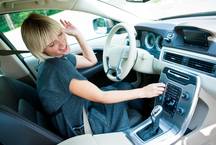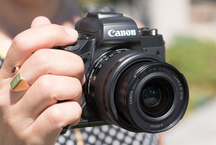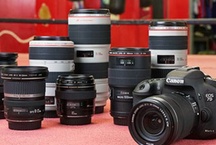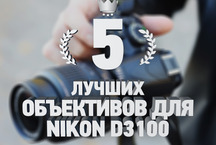Top 15 SLR cameras

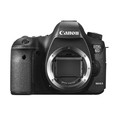


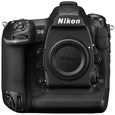
According to the Japan BCN Award, the modern market for SLR cameras is not just occupied by Japanese manufacturers, but has actually become a battlefield for titans - Canon with 61.1% of the market and Nikon - from 34.4% in fact divided it, the share of cameras from the same Sony, at the start of which in the DSLR segment recently had high hopes, is scanty. Yes, whatever one may say, during the invasion of mirrorless system cameras, only the recognized genres of the genre remain afloat.
Let in recent years, more and more often, there are cries that “DSLRs” are outdated, and modern mirrorless cameras completely cover their capabilities with their obvious advantages, this segment of the market is not going to die. And this is not only about the professional segment, where at least inertia means a lot: agree, having accumulated more than one lens, say, Canon EF «L"-Series, no one will be transplanted to the mirrorless with another bayonet - and therefore including Canon He continues to hold the first place in photojournalism with his "five" and "one" until now. Some of the decline in the market for SLR cameras was largely due to the amateur segment - those who simply want to “beautifully pofot” have not enough mirrorless cameras, but more or less decent smartphones.
However, whatever one may say, but also for an amateur, SLR cameras give serious advantages: for example, the possibility of using a huge number of lenses from the secondary market, including even Soviet ones with an inexpensive adapter, is not unimportant in conditions of a limited budget. The Canon EOS will allow you to get a high-profile “portrait painter” extremely cheaply (there are still a lot of “Helios-44”, and we still do not mention the old Japanese “glasses” with Ebay), but the replacement of whale glass on the system BZK will already cost a considerable amount. Well, about the "digital camera" with non-replaceable optics and especially camera phones will not speak.
Nevertheless, taking into account the obvious migration of the main demand in the semi- and professional segment, we will change the selection conditions of SLR cameras in comparison with the previous version of the rating, focusing on the seriousness of the camera’s capabilities - if you buy a DSLR, then you don’t want to play on Avito and return to the smartphone. "
The tendency of “overflowing” of many functions from the professional segment to the amateur one pretty much confuses the classification of cameras by user groups. But when creating the TOP-15 SLR cameras without their classification can not do.
Agree on terms
- Professional SLR Cameras - first of all, it is not even the quality of the matrix and the abundance of settings, not the dust and moisture protection, but a resource. When the number of shots per day approaches a four-digit number, it is the resource that becomes the most important: imagine the breakage of the shutter during an important reportage. Unpleasant? That's it.
- Semi-professional segment - this is, in fact, simplified "pros" cameras, often with preserving a large part of the "iron" from older models. In general, in skilled hands the difference will be small, except that the semi-professional cameras do not have a “machine-gun” speed of serial shooting, and the resource of the shutter is smaller.
- Amateur segment SLR cameras and manufacturers, and the regulations of world awards have long been divided into two: “For beginners” and “For advanced enthusiasts”. The first, frankly, boring: the maximum reduction in price (up to plastic bayonet), the minimum settings, but a lot of auto modes.But "advanced amateur" SLR cameras are quite interesting: they have more creative work opportunities and a higher resource. Well, and after installing resident programs like the Magic Lantern, they acquire the functionality familiar to the semi-professional segment: in a limited budget, such a SLR may already be of interest.
Rating the best SLR cameras 2018- beginning of 2019
| Category | A place | Name | Rating | Price |
|---|---|---|---|---|
| The best SLR cameras for beginners | 1 | Nikon D3500 Kit | 9.8 / 10 | 32 000 |
| 2 | Nikon D5300 Kit | 9.6 / 10 | 39 990 | |
| 3 | Canon EOS 2000D | 9.3 / 10 | 25 990 | |
| 4 | Canon EOS 1300D Kit | 9.2 / 10 | 23 590 | |
| The best SLR cameras "advanced amateur" level | 1 | Canon EOS 800D Kit | 9.7 / 10 | 49 990 |
| 2 | Nikon D5600 Kit | 9.6 / 10 | 50 990 | |
| 3 | Canon EOS 200D Kit | 9.3 / 10 | 36 490 | |
| The best semi-professional SLR cameras | 1 | Canon EOS 6D Mark II Body | 9.8 / 10 | 37 138 |
| 2 | Canon EOS 6D Body | 9.7 / 10 | 60 890 | |
| 3 | Nikon D610 Body | 9.7 / 10 | 75 489 | |
| 4 | Nikon D7500 Body | 9.6 / 10 | 69 990 | |
| 5 | Sony Alpha ILCA-77M2 Body | 9.5 / 10 | 94 990 | |
| The best professional SLR cameras | 1 | Canon EOS 1D X Mark II Body | 10 / 10 | 322 490 |
| 2 | Nikon D5 Body | 9.9 / 10 | 419 980 | |
| 3 | Canon EOS 5D Mark IV Body | 9.8 / 10 | 173 911 | |
| 4 | Canon EOS 5DSR Body | 9.7 / 10 | 135 900 | |
| 5 | Pentax K-1 Body | 9.5 / 10 | 117 009 |
The best SLR cameras for beginners
|
32 000
The TIPA Awards Best DSLR Camera award snatched off in the current 2019 still more or less fits the price for a kit into an adequate framework for the Russian understanding, although, of course, with an eye to great opportunities, someone with such a sum will go to the secondary market. There are seven whale options, by the way: we’re not going to list them as boring, but note that, besides the classic zoom cameras for 18-55 or 18-140 zoom cameras, you can take a DSLR with a high-speed thirty-five, and with a very specific telephoto 70 -300. Much camera inherited from the previous model D3400. First of all, this is the same matrix for 24 “MEGs”, which, in general, allows you to confidently print on A3 format and even more (if you try), 11-point autofocus and the ability to shoot FullHD video at 60 fps - so you be able to replenish the cohort and photographers, and, God forbid, video bloggers. However, in ergonomics, serious changes - less weight, a completely different shape of the handle, a different arrangement of buttons (by the way, at times more convenient and similar to the “Canon”, hehe) and - lo and behold! - less auto modes! Well, the last thing for a good SLR camera for a novice photographer is not the fact that plus, it’s rather the opinion of the author personally, who would gladly leave only the aperture priority, the shutter priority and the “manual” priority on the selector. However, “creative effects” like selective deletion of colors are left - if you don’t want to learn Lightroom and Photoshop, but are going to just click off the frames in the camera-based JPEG, and they will be useful. Do you take a great interest in street photography? Well, the camera turns on quickly, and the finger immediately falls on the shutter button, installed just inside the switch. Another change compared to its predecessor - it is twice as much autonomy, and on absolutely the same battery. So you can no longer really think about buying a spare battery or a battery grip at all: you need to put the battery in a big effort, even if you constantly use Live View and sync with your smartphone. Main advantages:
Minuses:
|
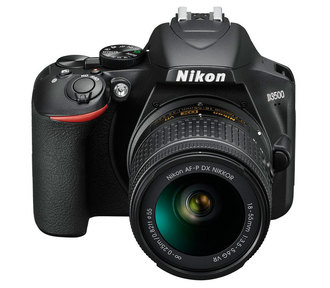 9.8 / 10
Rating
Reviews
For the level “I want a DSLR” - an excellent choice, in fact, the camera is comfortable and with good quality photos in the hands of the “teapot”. |
|
39 990
This camera clearly demonstrates that being a photo amateur is not cheap if you pretend to any level of professionalism. Starting from shooting in JPEG in auto mode, you may be disappointed, but it is worth switching to RAW and carefully reading the instructions how the camera starts to play with new colors: low noise even at ISO 3200 sensitivity, smart autofocus, though sometimes giving errors. The whale version of the camera is the best SLR camera for beginners and an excellent ticket to professional photography, the speed of the D5300 makes it possible even with high probability to get successful fast frames offhand (not like professional reportage cameras, but still). The maximum standard ISO number of the matrix with a crop factor of 1.5 - 3200, but fans of experiments can squeeze out all 25600 from the camera if they put up with noise.With such a matrix size of 24.2 million effective pixels guarantee good image detail. In the spirit of modernity, Wi-Fi support was added to the camera for fast photo transfer, a GPS module for adding geotagging. Not the most necessary things, but can be useful. A folding rear display with a variable rotation angle makes it easier to take pictures from awkward positions. Main advantages:
Minuses:
|
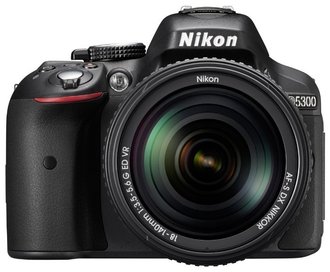 9.6 / 10
Rating
Reviews
Excellent SLR, whale lens is still missing. The frames are clear, saturated - I switched to RAW and I don’t even look at JPEG. |
|
25 990
The “two thousand” model has been on the market for more than a year and, frankly, directly shows that Canon is paying minimal attention to the “ultra-low” segment of SLR cameras. You must admit that the DIGIC 4+ processor, which appeared five years ago on the compact cameras IXUS / SX, and was used in the SLRs as early as 1300D, is not the most interesting option in terms of features. But at least here a metal bayonet finally appeared, the screen has grown to three inches with a resolution of 0.92 megapixels (although again we’re surfing - the same resolution was placed on the EOS 500D ten years ago!), And the diopter adjustment was installed on the viewfinder . Well, finally, they returned a separate switch instead of having to constantly turn the mode selector back and forth, as in the previous “four-digit” EOS. And NFC was added to Wi-Fi for quick pairing with a smartphone - moreover, if earlier in this line a smartphone was needed even for remote descent, then here you can already connect RS-60E3 cable. But, nevertheless, there is no central sync contact on the hot shoe, the battery and the memory card are for some reason tucked under a common cover, autonomy is within 500 frames (three times less than that of the D3500), the lack of an auto-cleaning matrix ... Simply put, The camera is virtually inferior to even nine-year-old EOS 550D in almost all points, which will cost a maximum of 10 thousand on the secondary market with an acceptable mileage. So, no matter how much the author loves Canon, let's be honest - it is better to add money to the same D3500 or buy a used camera. Main advantages:
Minuses:
|
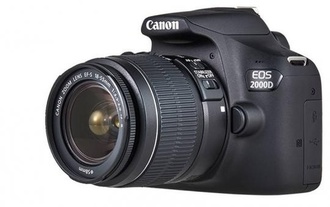 9.3 / 10
Rating
Reviews
The SLR camera is interesting and inexpensive, but as soon as you grow out of the auto modes, there is a desire to sell it. |
|
23 590
The “junior” EOS doesn’t try to pretend to be a professional SLR camera - this is directly indicated by a simple whale lens and a wide choice of auto modes (up to “Food Photography”). The camera is very similar to its predecessor - 1200D, but noticeably freshened by the “stuffing”: the Digic 4 processor was changed to Digic 4+, the screen improved and Wi-Fi support with NFC was added in the spirit of the times. The matrix here is absolutely the same as in the more expensive EOS 100D. If you do not chase the photosensitivity, you can easily get a good picture quality, in addition, the whale lens surprises with its autofocus speed. The distortion at the minimum focal length is minimal, so the camera is suitable for portrait shooting and photographing architectural monuments. Good and built-in photo filters. If the camera was shooting the series faster, and the series of shots themselves were longer ... Main advantages:
Minuses:
|
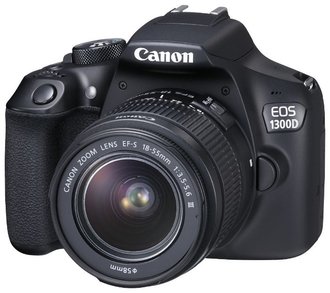 9.2 / 10
Rating
Reviews
Inexpensive, but for me - a very good amateur SLR. Compact, photos are clear and rich, especially if you do not use auto modes. |
The best SLR cameras "advanced amateur" level
|
49 990
Well, the “three-digit” series in Canon already looks much more attractive, but by the two-fold difference in price, you can immediately understand how simplified the “four signs” are. “Eightsotka” is presented back in 2017, but this camera, actually located at the junction with the semi-professional segment, will turn out to be outdated to call the language except for the victim of marketers who update their personal gadgets fleet every year, without having to give credit for the old ones. 45-point autofocus plus Dual Pixel matrix, enabling quick focusing and in Live View, built-in digital video stabilization, high-quality rotary touch screen, DIGIC 7 processor - this will be more than enough for an amateur who already has a serious photo craze. At the same time, to reduce the “threshold of entry”, the classic “Kenon” menu can be switched to an updated graphical interface, which is more convenient and understandable to a person who has just bought a reflex camera, the auto modes are varied and, in general, quite viable. Qualitative exposure metering will allow less use of manual correction, and auto white balance is good. In general, the camera will not scare the “kettle”, and the quality of the photo will not disappoint. Burst shooting - with a frequency of 6 frames per second, and the buffer fits up to 27 RAW-frames: not so long ago only models of a higher level could boast of such. In JPEG, the camera can even “scribble” until the SD card is finished. And in terms of dynamic range, the camera is closer to the “two-digit” series rather than to its predecessors. In short, as an option for “over-growth” this camera looks like an excellent option. Main advantages:
Minuses:
|
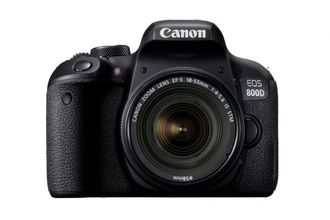 9.7 / 10
Rating
Reviews
Moved from the old 600D. The camera really added significantly as a photo, while still fitting into a reasonable price. |
|
50 990
Nikon's 800D direct competitor also has its advantages. For example, the touch screen allows you to quickly select the autofocus point when working through the viewfinder: if you move your finger along the right side of the screen, the focus point in the viewfinder will switch accordingly. This is much faster than the "Kenon", although it is suitable only right-handers. Autonomy - 970 frames, which again, more than the EOS 800D. The auto modes are diverse and work well, so when you first meet the camera there is less risk of spoiling the photo. Autofocus works quickly, but the camera definitely loses the EOS 800D - less cross-focus points and, what is most sad, there is no “dual pixel” matrix that provides high-quality and fast focusing when working with the screen. The camera also plays in serial shooting - a maximum of five frames per second, and then when RAW is cut to 12 bits, and for 6-7 frames the buffer is already full. In full quality, RAW is removed at a speed of no more than 3 frames per second - this is not enough for a full-fledged “reportage”, even when shooting in JPEG on a fast memory card after a couple of dozen frames, shooting will slow down for 1-2 seconds. To summarize: the camera is definitely fully satisfy the beginner, and the professional will not be very upset. But due to the limited possibilities of serial shooting, Nikon’s versatility is still losing to a competitor from Canon, and the quality of the matrix is still lower - at a comparable price, the camera goes to the second place in the rating. Main advantages:
Minuses:
|
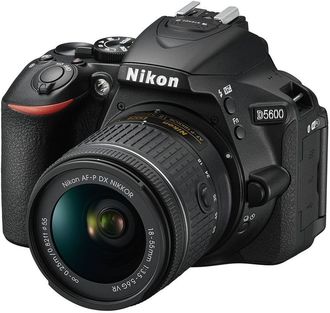 9.6 / 10
Rating
Reviews
Bought as the first. It is mastered quickly, the frames are good at automatics and at dusk, which, in my opinion, is a good indicator of camera quality. |
|
36 490
In the rating of the best SLR cameras, this camera, which won the TIPA Best Enthusiast DSLR Camera award in 2018, literally jumped on the running board of the outgoing train: Canon has already introduced its replacement in the “face” of the EOS 250D, where among the innovations is support for 4K video - at least Canon has a serious step forward in the “advanced amateur” segment, which is indirectly related to the capabilities of the camera. But for now, let's talk about the “dvuhsotka” - it is already quite acceptable for the purchase of “overgrowth”, well, and the owner, without any special claims, will last for a long time. A serious advantage of the camera is that it already uses a “dual pixel” matrix, which will allow using Live View with convenience. Another thing is that the main phase focusing here is cut down for the sake of price - only 9 points, but at least they are all crosswise. Here's the ergonomics of the country — a recessed mode selector, a “Video” mode switch combined with a power switch, and for some reason close the photo sensitivity button next to the DISP button behind the control wheel, which is not convenient. On the other hand, a novice photographer, who may not even know what an ISO is, will appreciate the simplified DSLR interface (as on the 800D, you can switch it to “classic”), the ability to take a photo just by pointing at the touchscreen - “threshold of entry” smartphone is minimal. True, it is worth noting the best Russification of prompts: a professional will understand what it means to “reg. soon shutter to move. the objects looked static. ”but he just doesn’t need these tips! As expected from a relatively inexpensive Crop-format SLR camera, the actual operating range of the ISO is too small: the noise becomes noticeable at ISO 800 just like nine years ago at the EOS 550D. However, both the sharpness of the image and the dynamic range have since become significantly better, so it cannot be said that in the lower segments, Canon is already marking time. Main advantages:
Minuses:
|
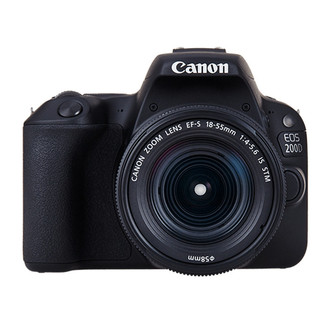 9.3 / 10
Rating
Reviews
For this money, the option is good, especially if you often use the screen: the focusing of the SLR works fine, I did not see this on cheaper cameras. |
The best semi-professional SLR cameras
|
37 138
The TIPA Best Full-frame DSLR Expert award received by this SLR camera in the past in 2018 is not surprising: the updated 6D still remains an excellent “full frame” with features close to the professional series, although marketers, in the opinion of many, cut down in favor of dividing the lines. The resolution of the matrix has grown decently - now it has immediately become 6 megapixels more, and this, with excellent detailing, already gives the possibility of printing on a large format in “commercial” quality on eight-color A3 + printers. Of course, this is not the EOS 5DSR, which is just “sharpened” for printing in large format, but the result looks very worthy. The sensor, of course, is “dual pixel,” and even with hardware support for light sensitivity up to forty thousand (programmatically, it can be raised at all to 102400), although the actual workers can only be considered values up to ISO 3200. When shooting through the viewfinder, you can work with 45 points autofocus, and, in addition to the stabilizer built into the lens (if an IS-series optics is installed), a five-axis electronic image stabilization is also available. The autonomy of the camera was able to raise up to 1,200 frames, so the battery grip will only need a “wedding attendant” or “reporter”. The optical viewfinder is convenient and has the ability to customize the information displayed in it, so it can argue with the touch screen for "usability" - for example, you can display a framing grid or an electronic level into it. But the case, unfortunately, from partially metallic became plastic - of course, it is durable and dust and moisture proof, but it is perceived as a step backwards. The second drawback is the limited capabilities of continuous shooting - the frequency is up to 6.5 frames per second, and the buffer ends in RAW in 20 short frames. Main advantages:
Minuses:
|
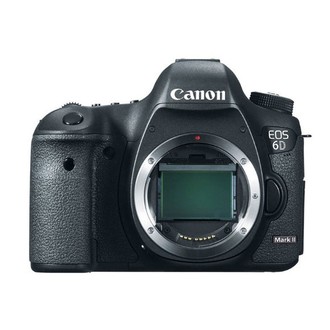 9.8 / 10
Rating
Reviews
Perhaps, I will stay with this camera for a long time - it suits everyone and completely. |
|
60 890
One of the most affordable SLR cameras with a full-frame sensor. The model is inferior to the 5D Mark III in resolution (20 megapixel), in terms of shooting speed (4.5 fps). Viewfinder coverage - 97%. Nevertheless, for a slow and thoughtful professional shooting, it is quite suitable. Nature, cityscape, studio portrait with excellent picture quality - all this is within the power of a photographer with a Canon EOS 6D. At the same time, the price is attractive for a novice professional or an advanced advanced amateur. Autofocus does not like the amateur - he clearly only touches the central point, but an experienced photographer, who does not disdain manual focusing, will not even notice. The location of all the controls is convenient and logical - having managed to use the amateur "SLR", on the EOS 6D you will go without any problems. The shutter works gently, at the level of professional technology. And the capacity of the built-in battery allows you to click on it for a very long time - if you need to take a lot of pictures, you will appreciate it. At the same time, the EOS 6D still remains one of the most compact SLR cameras with a full-frame matrix. The platform’s age is reminiscent of the video at the level of the late 2000s: only FullHD at 30 frames per second. Alas, for the processor Digic 5 is the ceiling, and the added ability to transfer files and control over WiFi here is more like cosmetics. Main advantages:
Minuses:
|
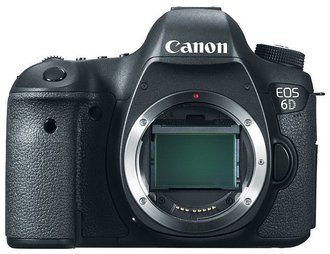 9.7 / 10
Rating
Reviews
I work with this camera not the first year. Of course, I am thinking of changing ... but with the current prices of EOS 6D it is difficult to find an adequate replacement. |
|
75 489
Keeping quite compact dimensions, the camera is pleased with moisture protection and smart multimode autofocus - it is suitable for studio shooting, and for the open air. A full-size 24 megapixel matrix has a more than decent level of noise at high ISO values - up to 3200 you can work without any fear. The D610 with a well-chosen set of lenses will allow you to feel like a reporter and photo artist, although in comparison with professional cameras there is not enough of the main thing - the shutter resource. But this is an inevitable retribution for the price, which professional cameras have already had six, and not five-digit ones. The camera is a classic frame layout when its center is emphasized - this is where the autofocus points are concentrated. Playing with the composition of the frame, you will have to remember about manual focusing. Although the SLR is not assembled in Japan (the only one of the full-frame "Nikonov"), the build quality cannot be faulted - everything is fine-tuned, it does not play and does not creak even in such hands where the camera seems like a toy. The main advantage of the camera over the previous model D600 is the improved dust protection at times, for which it is worth saying a special thank you. Main advantages:
Minuses:
|
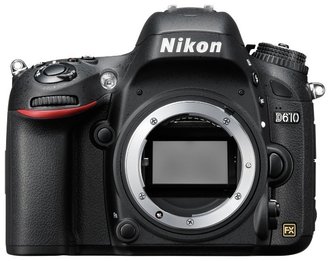 9.7 / 10
Rating
Reviews
Very good SLR camera, use for three years, “nastrel” - more than 40 thousand photos.There are no complaints about the quality, it is necessary to lick the frames in Photoshop minimally. |
|
69 990
This is what the D7500 DSLR certainly boasts, so this is a list of regalia, involuntarily causing associations with Brezhnev's tunic. Bend your fingers: TIPA Best APS-C Expert 2018, EPR Best Prosumer DSLR Camera 2017-2018, Midrange Camera of the Year 2017 from DPReview, Reddot Award 2018, IF Design Award 2018. But in this list you also noticed one weak side of the camera - yes, the matrix in it is “crooked”, therefore, having become TIPA laureates in the same year as the EOS 6D Mark II, it appeared in a lighter weight. However, the D7500 is not so much a development of the previous one in the D7200 series, as much as the “simplification” of the more advanced D500. It is from there that the matrix is inherited, and the ability to shoot up to 50 frames in length with a speed of 8 fps in the RAW series, and the metering sensor with 180,000 pixels. The display is now able to tilt, so that you can take pictures in Live View from the ground, while maintaining the convenience of cropping. Well, when working with the viewfinder, the 51-point autofocus is definitely useful. Especially this SLR camera will interest video lovers - it supports full-fledged work in 4K at 30 fps, which the “Kenons” so far only give in the professional segment. Although, of course, the announced EOS 250D can shake the balance - but, given the positioning of the one in the “three-digit” series, it will obviously have to lose the D7500 in another. The case is also deprived of a hint of magnesium alloy, which was at the D7200 - only high-impact plastic, about dust and moisture protection is not forgotten. In terms of ergonomics, there are no complaints, all controls are in place, and we especially note the convenience of changing the sensitivity without interrupting the viewfinder - the ISO button in the “right” place. Therefore, let's join the experts - among the “crooked” SLR cameras Nikon definitely offers the best now, and it deserves the status of a semi-professional. Main advantages:
Minuses:
|
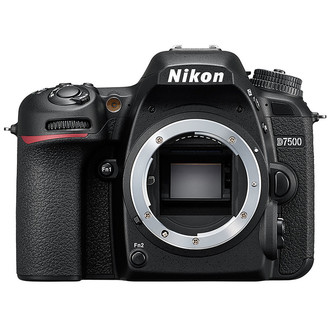 9.6 / 10
Rating
Reviews
I took it as a spare DSLR along with a professional one — I appreciated how easy it was to move from one to another, ergonomics at altitude, and the quality of the picture for the crop was excellent. |
|
94 990
Another mirror camera with a crop matrix - alas, Sony does not offer us a fullframe at a price of less than 100 thousand, and indeed the company has recently decided to focus on mirrorless systems. However, the company takes their money for good reason: the Bionz X processor installed here allows you to work with 79 (!) Focus points, quickly digest RAW in the burst mode with maximum resolution, and is ready to work 0.86 seconds later after turning on the camera . Using a magnesium alloy, Sony engineers made the camera both lightweight and durable, which is important for the camera, which just asks to shoot the story literally on the run. Since, when working with RAW, you can shoot a series of up to 33 frames at maximum resolution, the camera really works fine for reportage work. If we add to this the speed of focusing with wide-angle lenses at 0.09 seconds ... can we forgive Sony a “crooked” matrix? Main advantages:
Minuses:
|
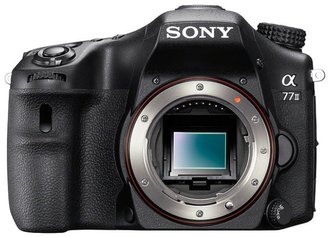 9.5 / 10
Rating
Reviews
I work at weddings, and the camera is great for this - it quickly focuses, does not tire hands. The battery changes easily, so there is no problem carrying a spare. |
The best professional SLR cameras
|
322 490
The legendary "reportage" remains true to itself - the matrix for it by the current standards of low resolution, a little more than 20 megapixels (but more than the previous model). But this is how it is taken not for printing in large format: this is an “Olympic” camera, designed precisely to create gigabytes of photos at a speed of 14 frames per second (and in Live View - all 16).The camera, as befits her, has excellent accuracy and speed of focusing, accurate exposure metering and a wide dynamic range - this will ensure the maximum of good photos, even if shooting is on the run. Another thing is that to run with it is rather heavy - a “naked” carcass weighs more than a kilogram. And now install the batteries, hang the telephoto on the bayonet ... Well, it's time to recall physical training! And to wait for the next year - we think Canon will not change the Olympic tradition, since the new generations of reporting cameras are in time for the next summer Olympics. Main advantages:
Minuses:
|
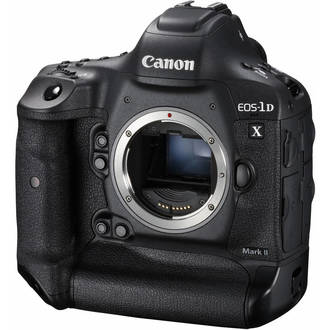 10 / 10
Rating
Reviews
The camera is expensive, but in the hands of a professional reporter pays for itself - you know that it will never let you down. |
|
419 980
Even by the standards of the professional segment, the difference in price for EOS 1D X Mark II and D5 SLR cameras is palpable. How can this recoup the flagship model Nikon? Hmm ... With the same resolution of the D5 matrix, it is even slightly inferior in the rate of fire - the same 14 frames per second as Canon, it can issue only with mirror lock, and in the same mode, Canon already gives 16 fps. It seems to be a little bit, but for reportage photography, and this can play a role. On the other hand, 153 autofocus points, of which 99 of the cross are a serious advantage over Canon, at least on paper. The central point remains operable at -4EV - the competitor only pulls up to -3EV. This is in the difficult conditions of shooting can already play its role much stronger than the lower speed of the series. But, it is worth going to the Live View, as again Canon goes forward, thanks to Dual Pixel, which is able to quickly focus on the point indicated by simply touching your finger. But when shooting video, the EOS 1D X Mark II leads unequivocally - 4K it writes at 60 fps, while the D5 supports only 30 fps, which is not enough when shooting dynamic scenes. Exactly the same double break and when working in FullHD - Canon has a maximum of 120 frames per second, Nikon - 60. But finally, the quality of the photo puts the point on i - although Nikon and the ISO ceiling are higher, but already the dynamic range (which is expected - for the sake of one you have to sacrifice the other). Yes, there is no doubt that the camera is good and fully corresponds to the status of a professional one - but you already understand why it is in this segment that Canon continues to hold first place stubbornly. Main advantages:
Minuses:
|
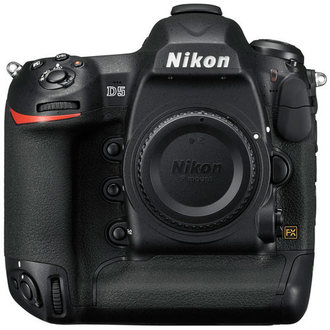 9.9 / 10
Rating
Reviews
A very serious reporting camera, but the price is already making you wonder whether it really is justified. |
|
173 911
It would seem that more recently, he drooled at the announcement of the first EOS 5D in the magazine “Photo Making” ... and now the magazine is no longer there, and Mark IV is already on the shelves. And it is still capable of salivation: a beautiful full-size matrix with 30 million effective pixels, 41 cross-point autofocus. It's hard to call the Mark IV a reportage; its 7 frames per second during continuous shooting and the buffer for 21 RAW-frames are not enough for this. But for some reason I don’t want to drag him to a report - rather, build a composition in the frame, adjust the light, tell the model model ... Sorry, of course, we will shoot a still life. Recall that at one time EOS 5D Mark II became the pioneer of professional video shooting on SLR cameras. Mark IV just got better: it can write video in 4K resolution with excellent sharpness and color rendition, although a memory card will need very fast for this. If we talk about image quality, then Canon will confidently argue in the hands of a professional with the Fujifilm GFX 50S camera presented this year, which is more than two times more expensive. Finally, we recall that the camera in 2017 deservedly received the TIPA (Technical Image Press Association) award in the nomination “Best full-frame SLR camera”. Main advantages:
Minuses:
|
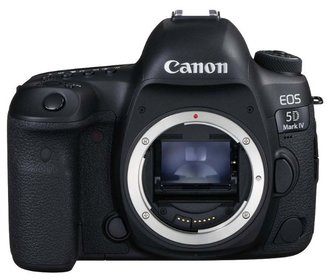 9.8 / 10
Rating
Reviews
Canon holds the mark. For a photo studio, as I believe, this is the best camera from those that you can now buy. |
|
135 900
You should not chase megapixels, but sometimes they are necessary - when printing on large formats, the resolution of the source code is of great importance. But it will have to sacrifice the speed of work: these cameras are not suitable for fast continuous shooting. They can be compared to a single-barrel hunting rifle, while a professional “reporter” will become a semi-automatic with a large store: reach the target, aim, make a single accurate shot, rather than water the lead, hoping to hit the entire sector. The elements of the 50-megapixel EOS 5DSR are advertising studios, landscape and architectural photography, and in this it is really good. Pictures do not lose any detail in detail even when printing in A0 format - and this is no less than a square meter from a matrix of 24 * 36 mm! The top-level matrix is one in two versions (5DS and 5DSR), but it is in the 5DSR variant that it is deprived of a smoothing filter, which ensured excellent image sharpness. Noises at high ISO values may seem a bit much, but again we recall that the camera was created primarily for photo studios with high-quality lighting, where there is no need to unscrew the photosensitivity. Two Digic 6 processors are responsible for image processing at once, so the camera does not suffer from “brakes”. Main advantages:
Minuses:
|
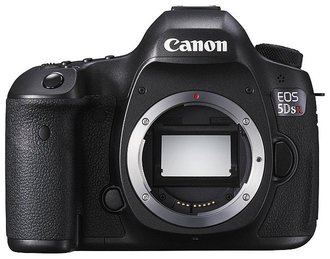 9.7 / 10
Rating
Reviews
We use this camera in the studio. High-quality photobanner a few meters? Try this with any other camera, and then compare. |
|
117 009
This brand was widely heard by Soviet photographers, although getting a real Pentaks back then was like flying to the moon: it was the Pentax K bayonet mount that was prescribed for the good old Zenits. But “Zenit” is long gone, and the Pentax K-1 is quite able to satisfy the photographer now. For a long time, Pentax was an outsider in the market, not offering professional cameras with full-size arrays. Therefore, the presentation of the K-1 model in 2016 was really long-awaited, and the attention of critics was justified. And K-1 did not disappoint - 36.4 million effective pixels on a full-frame matrix will allow you to successfully prepare large-format images, the dual image stabilizer is the best fit for a compact camera, which is logical to use when shooting with hands and in motion. The swivel display and the ability to control from the tablet via Wi-Fi are also a topic here - it is not always possible to shoot using the viewfinder. Switching between autofocus and manual focus made from the lens to the body, and some menu items, usually hidden deep in the navigation, can be caused by a rotary switch on the camera - everything is oriented towards quick shooting. Directly in the viewfinder you can see indicators of the electronic level, allowing you to quickly set the horizontal: competitors do not have this solution either. Well, if you add a passport resource shutter of 300,000 frames ... Pentax K-1 is the winner of the 2016 TIPA Award in the nomination "Best full-frame SLR camera." Main advantages:
Minuses:
|
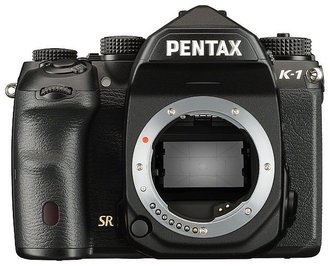 9.5 / 10
Rating
Reviews
The best SLR camera for handheld shooting.We have been waiting for a full-size Pentax, and waited for a reason. |
How to choose a SLR camera?
The guarantee of image quality for any digital camera is its matrix, and first of all its dimensions. The smaller the physical dimensions of each pixel, the higher the noise level will be, and APS-C matrices with a crop factor of 1.5-1.6 by modern standards are the minimum for a camera claiming to be a photo quality. The ideal option is, of course, if you don’t talk about medium format cameras, these are full-frame matrices - their physical size is the same 24 * 36 mm as in the good old small format film.
But unlike the film, which has a predetermined sensitivity, the sensitivity of the matrix in digital cameras can be adjusted. To obtain a frame with a normal ratio of highlights and shadows, the correct exposure is needed, and it is determined precisely by the ratio of sensitivity, aperture and shutter speed. But, since both the aperture and the shutter speed can be limited by the photographer’s goals (the aperture sets the depth of field, short shutter speeds are needed when shooting moving objects), the more sensitivity rangein which the camera provides minimal noise, the more versatile and functional the camera.
Buy a whale or one "carcass"? This is one of the most popular questions for novice photographers. We gave the answer already in the selection of models in the rating: it was not for nothing that we took whales in the amateur segment, in the rest we presented “carcasses”. A lover of a whale lens will last for a long time, and with the purchase you will not have to worry about buying a lens. Having learned how to work with the whale "shifter", you can already assemble your own set of lenses for specific purposes (wide-angle, telephoto) ... or simply continue to take pictures with the whale lens.
